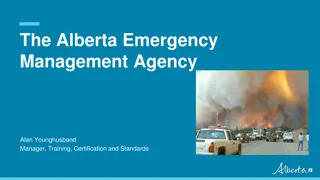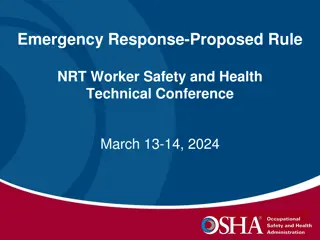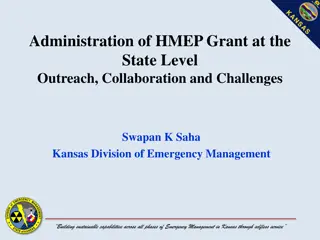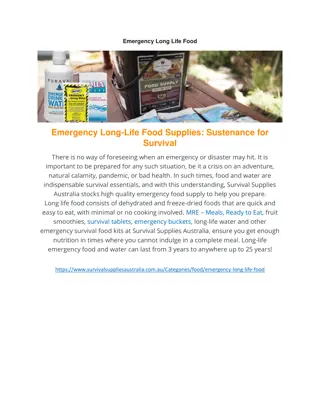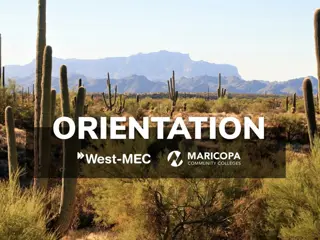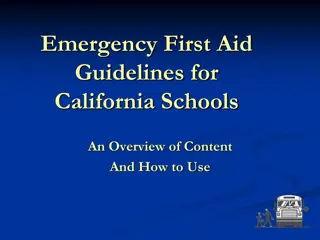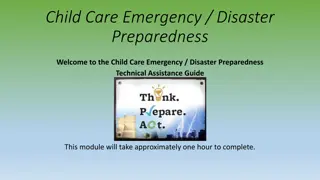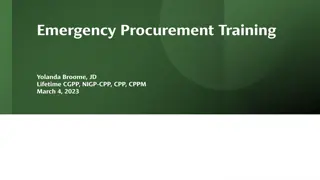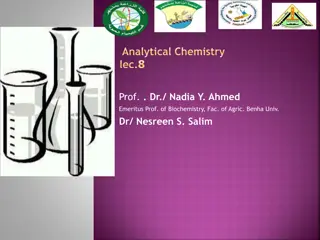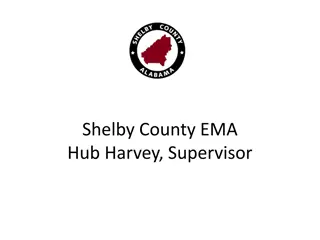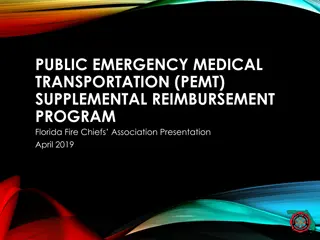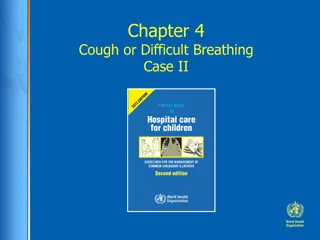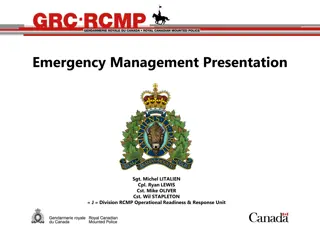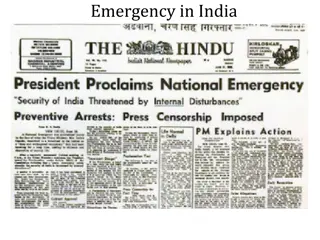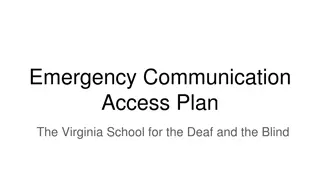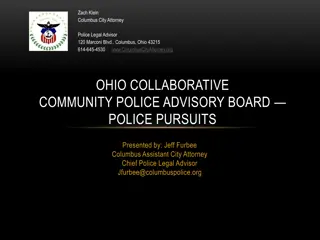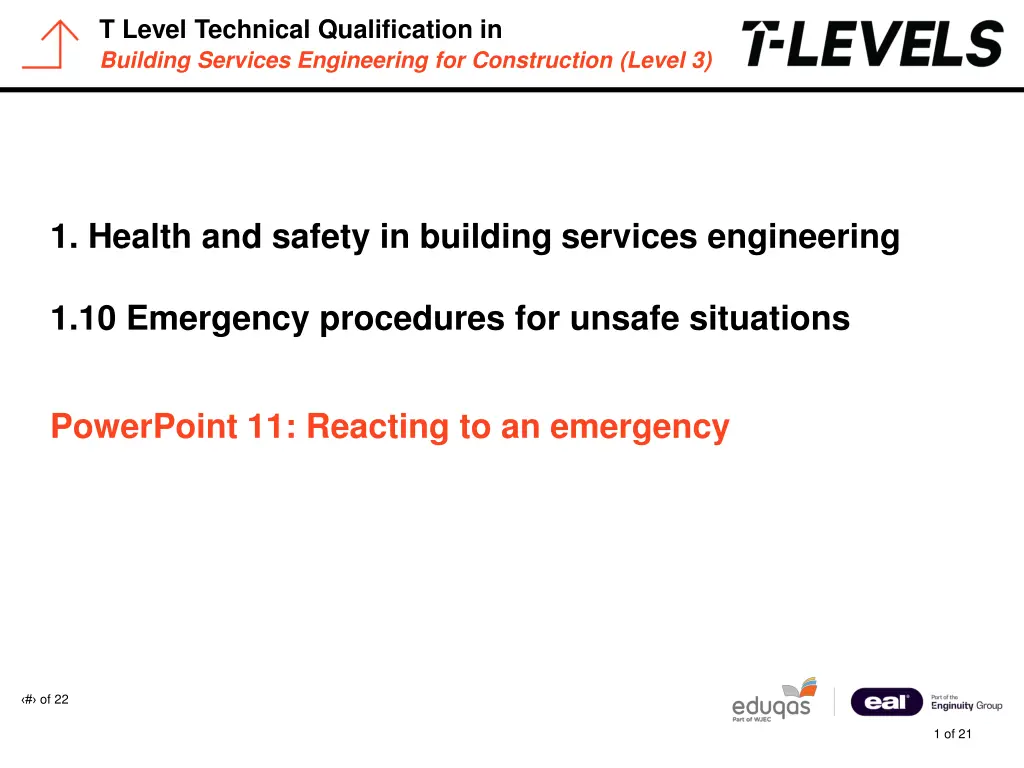
Emergency Procedures in Building Services Engineering
Learn about emergency procedures in building services engineering, including the Gas Industry Unsafe Situations Procedure (GIUSP) and Gas Safety Installation and Use Regulations. Understand how to react to unsafe situations, such as fire, gas leaks, and more, to ensure safety in construction projects.
Download Presentation

Please find below an Image/Link to download the presentation.
The content on the website is provided AS IS for your information and personal use only. It may not be sold, licensed, or shared on other websites without obtaining consent from the author. If you encounter any issues during the download, it is possible that the publisher has removed the file from their server.
You are allowed to download the files provided on this website for personal or commercial use, subject to the condition that they are used lawfully. All files are the property of their respective owners.
The content on the website is provided AS IS for your information and personal use only. It may not be sold, licensed, or shared on other websites without obtaining consent from the author.
E N D
Presentation Transcript
T Level Technical Qualification in Building Services Engineering for Construction (Level 3) PowerPoint presentation 1. Health and safety in building services engineering 1.10 Emergency procedures for unsafe situations PowerPoint 11: Reacting to an emergency # of 22 1 of 21
T Level Technical Qualification in Building Services Engineering for Construction (Level 3) Objectives By the end of the session learners should be able to: outline the Gas Industry Unsafe Situations Procedure (GIUSP) discuss the Gas Safety Installation and Use Regulations describe emergency procedures in relation to fire, excavations, electric shock, gas leaks, carbon monoxide, water leaks and terrorist threats discuss suitable first aid. # of 22 2 of 21
T Level Technical Qualification in Building Services Engineering for Construction (Level 3) Gas Industry Unsafe Situations Procedure The Gas Industry Unsafe Situations Procedure (GIUSP) is a document that details the correct course of action for a gas engineer if they identify an unsafe installation during their work. The document assists the gas engineer with classifying the unsafe installation into two categories as follows: Immediately dangerous (ID) appliances/installation An ID appliance/installation is one which is an immediate danger to life or property, eg a gas leak or carbon monoxide production from a gas appliance outside acceptable levels. At risk (AR) appliance/installation An AR appliance/installation is one which is potentially dangerous, eg where one or more faults exist that may in the future constitute a danger to life or property. # of 22 3 of 21
T Level Technical Qualification in Building Services Engineering for Construction (Level 3) Gas Industry Unsafe Situations Procedure Both ID and AR situations require a qualified Gas Safe gas engineer to take action. ID appliances/installations With the gas user s permission, the engineer should endeavour to repair or rectify the fault/situation. If this is not possible, the engineer must (with or without owner permission) disconnect the appliance from the gas supply, cap the open end, attach a warning label to the appliance and issue a warning notice that the appliance must not be used. AR appliances/installations In general, the appliance should be turned off with the customer s permission and a danger do not use label attached. A warning notice should be issued detailing the at risk situation/s. # of 22 4 of 21
T Level Technical Qualification in Building Services Engineering for Construction (Level 3) Gas Safety Installation and Use Regulations (GSIUR) 1998 The gas safety installation and use regulations were introduced in 1998 and amended in 2018. They apply to anyone who may have a duty under the Regulations, including those who carry out the following on gas appliances: installation service maintenance repair Landlords also have duties under these regulations. # of 22 5 of 21
T Level Technical Qualification in Building Services Engineering for Construction (Level 3) Fire Fire is the most destructive of all the elements and unfortunately fires count for a significant loss of lives and property every day. However, if we always think of fire safety, we should be able to ensure that fires do not happen. You should only fight a fire if you know what you are doing, and do not put yourself or others in danger. There are 4 types of fire extinguisher commonly used: water red label foam cream label carbon dioxide (CO2) black label dry powder blue label. # of 22 6 of 21
T Level Technical Qualification in Building Services Engineering for Construction (Level 3) Fire There are also 6 different types of fire. Type Type A Fire Solid Type of extinguisher Water, foam or dry powder Type B Liquid Foam, dry powder or carbon dioxide Dry powder or carbon dioxide Type C Gas Type D Metals Dry powder or carbon dioxide Type E Electrical Dry powder or carbon dioxide Type F Cooking oils and fats Special wet fire extinguisher # of 22 7 of 21
T Level Technical Qualification in Building Services Engineering for Construction (Level 3) Fire: what to do in an emergency If you discover a fire, raise the alarm. Keep calm and act quickly, get everyone out as soon as possible. If you are asked to evacuate, or fire alarms are set off, move quickly and carefully to the nearest safe exit and to your evacuation meeting point, closing windows if safe to do so. Don t waste time investigating what s happened or rescuing valuables. If there s smoke, keep low where the air is clearer. Before you open a door, check if it s warm. If it is, don t open it fire is on the other side. Call 999 as soon as you re clear of the building. # of 22 8 of 21
T Level Technical Qualification in Building Services Engineering for Construction (Level 3) Excavations Sometimes there is a need for construction operatives to work in excavations and it is important to be aware of the requirements to work safely. The maximum depth of an unsupported excavation is 1.2m. Beyond this depth, the trench must be either: battened sloped sides usually at 45 degrees benched sides are stepped away from the excavation supported using excavation supports. Other requirements are detailed on the next slide. # of 22 9 of 21
T Level Technical Qualification in Building Services Engineering for Construction (Level 3) Excavations Additional requirements for working in an excavation are: a secured ladder for access and egress excavation spoil must be stored at least 1m from the edge to prevent collapse the excavation must have a protective barrier vehicle stops must be used the use of liquefied petroleum gas (LPG) is prohibited as it is heavier than air and will pool in the excavation warning notices should be visible from all sides. # of 22 10 of 21
T Level Technical Qualification in Building Services Engineering for Construction (Level 3) Electric shock Electricity is one of the most dangerous elements that we have to deal with. You can t see it or smell it but it could kill you. Here is what to do if you have to help someone who has had an electric shock. Try and establish if the hazard is still present, otherwise you could end up with two casualties. If possible, isolate the electrical supply or remove the person from the supply by using an implement made of non-conductive material, such as a brush. # of 22 11 of 21
T Level Technical Qualification in Building Services Engineering for Construction (Level 3) Electric shock Check to see whether the person is breathing. Look, listen and feel for breathing for no more than 10 seconds. Is the chest rising and falling? Can you feel their breath against your cheek? Ensure their airway is clear. To do this, place one hand on the casualty s forehead and gently tilt the head backwards, then lift the chin using only two fingers. Start resuscitation procedure if he or she is not breathing: 30 chest compressions to 2 rescue breaths. Get medical help as soon as possible # of 22 12 of 21
T Level Technical Qualification in Building Services Engineering for Construction (Level 3) Electric shock If the casualty is breathing, loosen clothing that might restrict the flow of blood (such as neckties or shirt buttons) and place him or her in the recovery position. Once a person regains consciousness after a fainting episode, you may find it helps to lay them on their back and raise their legs to encourage blood to flow to the brain. Get medical help as soon as possible # of 22 13 of 21
T Level Technical Qualification in Building Services Engineering for Construction (Level 3) Gas leaks It s crucial to act quickly in a gas emergency. To stay safe: Turn off the gas emergency control valve (also called the gas emergency shut-off valve) at the meter, unless the meter is in a basement or cellar or at LPG bulk tanks or storage vessels. Extinguish all naked flames and don t smoke. Don t operate electrical switches (including turning light switches on or off) because this can ignite escaping gas. Get fresh air immediately; make sure you open all doors and windows to ventilate the area. Contact the relevant National Gas Emergency service number. # of 22 14 of 21
T Level Technical Qualification in Building Services Engineering for Construction (Level 3) Gas leaks If the attending emergency operative identifies an issue with any gas appliances, follow their advice concerning the use of the equipment. Where advised, contact a Gas Safe registered engineer to fix the appliance and check it s safe. Don t turn the gas supply on again until it s been checked by a Gas Safe registered engineer. If you re feeling unwell, visit your GP or hospital immediately and let them know you may have been exposed to carbon monoxide. # of 22 15 of 21
T Level Technical Qualification in Building Services Engineering for Construction (Level 3) Carbon monoxide CO2 poisoning symptoms are similar to those of flu, food poisoning, viral infections, fatigue and a hangover, which makes it easy to mistake this very dangerous poisoning for something else. The symptoms of CO2 poisoning are: headaches dizziness nausea breathlessness collapse loss of consciousness. # of 22 16 of 21
T Level Technical Qualification in Building Services Engineering for Construction (Level 3) Water leaks In the event of an uncontrolled water leak the first course of action is to identify whether the leak is inside or outside the property. If the leak is inside the property from the cold or hot water supply, it can be controlled by closing either the main stop valve on the incoming main in the house or closing the isolation valve on the incoming supply to the appliance. If the leak is outside the property, contact with the local water supplier to attend and repair the leak. # of 22 17 of 21
T Level Technical Qualification in Building Services Engineering for Construction (Level 3) Terrorist threats If you are involved in a terrorist incident, the main advice is run, hide and tell . RUN: only if this is possible, do not put yourself in further danger. Insist that others leave with you Leave your belongings behind Consider the safest route is there a safe way? HIDE: if you cannot run, find cover from gunfire (e.g., behind substantial brickwork) Make sure the attacker cannot see or hear you put your phone on silent and turn vibrate off Be aware of your exits and try not to get trapped Barricade yourself in and keep away from the door # of 22 18 of 21
T Level Technical Qualification in Building Services Engineering for Construction (Level 3) Terrorist threats TELL: call 999 as soon as you get the chance If you cannot speak, follow the call taker s instructions Give any relevant information location, description of attackers, casualties The National Counter Terrorism Security Office (NaCTSO) provides further guidance. Follow the link for more information on what to do in the event of a terrorist attack. https://www.askthe.police.uk/content/Q958.htm# Source: Q958: What should I do in the event of a terrorist attack? (askthe.police.uk) # of 22 19 of 21
T Level Technical Qualification in Building Services Engineering for Construction (Level 3) First aid in the workplace Health and safety regulations require employers to provide adequate and appropriate equipment, facilities and personnel to enable first aid to be given if an employee suffers an accident or injury or falls ill at work. While different working environments have different needs, the minimum first- aid provision in any workplace or construction site should include: a suitably stocked and maintained first-aid box which must be replenished immediately after something has been used, otherwise you risk compromising the next casualty an appointed person to take charge of first-aid arrangements 24-hour quick access to the first-aid equipment a trained first-aider always available during working hours. # of 22 20 of 21
T Level Technical Qualification in Building Services Engineering for Construction (Level 3) Any questions? # of 22 21 of 21

